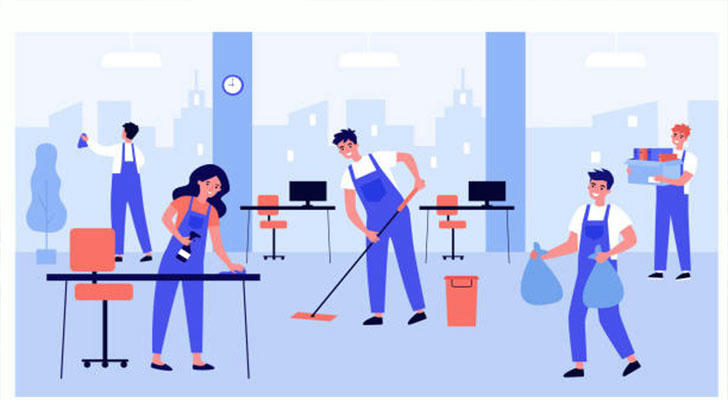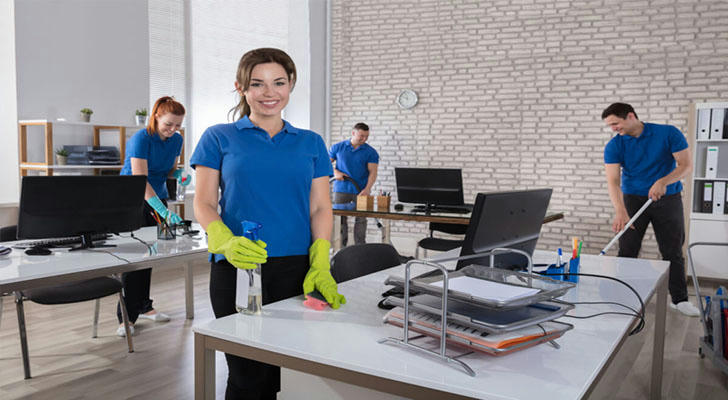Career Outlook for Cleaners in the USA: Employment Trends for the Next 5 Years
The cleaning industry in the United States plays a vital role in maintaining hygiene and safety across residential, commercial, and public spaces. Cleaners, often working behind the scenes, contribute significantly to public health, workplace productivity, and overall community wellbeing. As the economy evolves and societal needs shift, understanding the career outlook and employment trends for cleaners over the next five years is essential for job seekers, employers, and policymakers alike.

Overview of the Cleaning Industry in the USA
The cleaning sector encompasses a wide range of roles, including janitors, housekeeping cleaners, industrial cleaners, and specialized sanitation workers. According to the U.S. Bureau of Labor Statistics (BLS), as of 2024, there are approximately 2.3 million cleaning workers employed nationwide. These professionals serve in various settings such as offices, schools, hospitals, hotels, manufacturing plants, and public transportation systems.
The demand for cleaning services is closely tied to population growth, urbanization, and increased awareness of health and sanitation standards. The COVID-19 pandemic further heightened the importance of thorough cleaning and disinfection, prompting businesses and institutions to invest more heavily in cleaning protocols.
Employment Growth Projections
The BLS projects a steady growth rate of about 6% for cleaning occupations from 2024 to 2029, which is roughly on par with the average growth rate for all occupations in the country. This growth translates to an estimated 140,000 new cleaning jobs created over the five-year period.
Several factors contribute to this steady increase:
- Rising Health and Safety Standards: Enhanced sanitation requirements in healthcare facilities, schools, and public venues continue to drive demand for skilled cleaning workers.
- Expansion of Commercial and Residential Spaces: As new buildings and housing developments emerge, the need for ongoing cleaning and maintenance services grows.
- Aging Workforce: Many current cleaning professionals are approaching retirement age, creating openings for new entrants into the field.
Key Employment Trends Affecting Cleaners
1. Increased Emphasis on Specialized Cleaning
The complexity of cleaning tasks is evolving. Beyond routine janitorial duties, there is growing demand for cleaners trained in specialized disinfection techniques, particularly in healthcare and laboratory environments. This trend encourages workers to acquire certifications and training in areas such as biohazard cleanup, mold remediation, and the use of advanced cleaning technologies.
2. Technological Advancements and Automation
Automation and robotics are gradually making inroads into the cleaning industry. Robotic vacuum cleaners, floor scrubbers, and UV disinfection devices are becoming more common in large facilities. While these technologies can increase efficiency and reduce manual labor, they do not fully replace human cleaners. Instead, cleaners are increasingly required to operate, maintain, and complement these machines, which may lead to a shift in required skills rather than a reduction in jobs.
3. Growing Demand for Eco-Friendly Cleaning Practices
Environmental sustainability is influencing cleaning practices across the USA. Many organizations now prefer cleaning services that use environmentally friendly products and methods to reduce chemical exposure and waste. Cleaners familiar with green cleaning techniques and products may find enhanced job opportunities as this trend continues.
4. Flexible and Part-Time Work Opportunities
The cleaning industry offers a range of employment arrangements, including full-time, part-time, and contract-based roles. This flexibility appeals to diverse groups, such as students, retirees, and individuals seeking supplementary income. However, it can also mean variability in job stability and benefits, which prospective workers should consider.

Salary and Compensation Insights
As of 2024, the median hourly wage for cleaners and janitors in the United States is approximately $14.50. Entry-level positions may start lower, while experienced cleaners, especially those with specialized skills or supervisory responsibilities, can earn upwards of $20 per hour or more.
Wages vary by region, employer type, and the complexity of duties performed. Urban areas with higher living costs often offer better pay, but competition for jobs may also be more intense. Additionally, some employers provide benefits such as health insurance, paid leave, and retirement plans, although these are more common in full-time positions.
Challenges and Considerations
While the cleaning profession offers steady employment opportunities, it also presents certain challenges:
- Physical Demands: Cleaning work can be physically intensive, involving standing for long periods, lifting, bending, and exposure to cleaning chemicals.
- Health and Safety Risks: Workers may encounter hazardous materials, infectious agents, or unsafe environments, making adherence to safety protocols essential.
- Job Perception: Despite its importance, cleaning is sometimes undervalued socially, which can affect worker morale and retention.
Addressing these challenges requires ongoing training, proper protective equipment, and recognition of the critical role cleaners play in society.
Opportunities for Career Advancement
The cleaning industry offers pathways for career growth. Experienced cleaners can advance to supervisory or management roles, overseeing teams and coordinating cleaning operations. Some may specialize in areas such as environmental services in healthcare or industrial cleaning, which often come with higher pay and responsibilities.
Entrepreneurship is another avenue, with many cleaners eventually starting their own cleaning businesses or franchises. This requires business acumen, customer service skills, and an understanding of market demands.

Conclusion
The career outlook for cleaners in the USA remains positive over the next five years, supported by steady job growth, evolving industry standards, and technological advancements. Cleaners contribute indispensably to public health and safety, and their roles are becoming increasingly specialized and valued.
For individuals considering a career in cleaning, understanding the trends and opportunities can help in making informed decisions about training, skill development, and long-term goals. Employers and policymakers should continue to support this workforce through fair compensation, safety measures, and professional development initiatives.
As the cleaning industry adapts to new challenges and innovations, cleaners will remain essential to maintaining the cleanliness and safety of America’s homes, workplaces, and public spaces.
